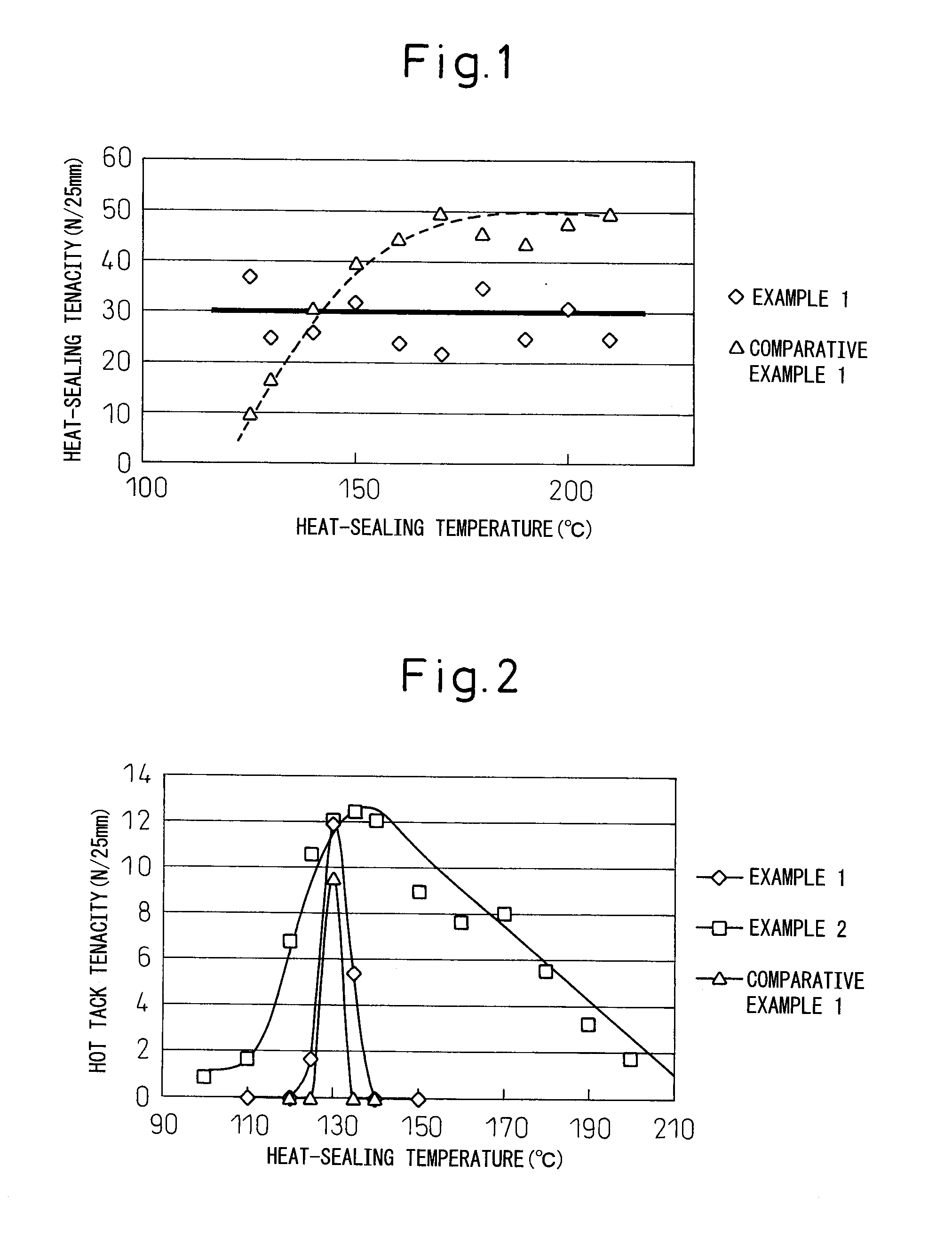Thermally adhesive laminated nonwoven fabric
a nonwoven fabric and thermal adhesive technology, applied in the field of laminated nonwoven fabrics, can solve the problems of insufficient thermal adhesion of the resultant nonwoven fabric to a nonwoven fabric or a film for which a low melting point resin is used, nonwoven fabric leakage, etc., and achieve the effects of low melting point, improved anchoring effect and bonding function, and sufficient tenacity
- Summary
- Abstract
- Description
- Claims
- Application Information
AI Technical Summary
Benefits of technology
Problems solved by technology
Method used
Image
Examples
example 1
[0124]Using a two-component spinneret for spun bonding, a sheath-core composite yarn nonwoven fabric formed from a high density polyethylene (HDPE, having a melting point of 130° C.) as a sheath component and a poly(ethylene terephthalate) (PET, having a melting point of 263° C.) as a core component and having an average yarn diameter of 16 μm was prepared as a (c) layer of a laminated nonwoven fabric.
[0125]A poly(ethylene terephthalate) (PET, having a melting point of 260° C.) was injected through an injection spinneret for melt blowing at a spinning temperature of 300° C., at a hot air temperature of 320° C. with an air blowing rate of 1,000 Nm3 / hr to give as a (b) layer an extremely fine yarn nonwoven fabric having an average yarn diameter of 2 μm. The extremely fine yarn nonwoven fabric thus obtained was laminated to the (c) layer.
[0126]A poly(ethylene terephthalate) (PET, having a melting point of 263° C.) was injected through a spinneret for spun bonding at a spinning temperat...
example 2
[0128]A nonwoven fabric having a fabric weight of 50 g / m2 and composed of three layers was prepared in the same manner as in Example 1 except that the sheath component of the sheath-core composite yarn of the (c) layer was changed to a copolymerized polyester (melting point of 160° C.). The thus obtained nonwoven fabric composed of three layers was partially heat contact bonded with an emboss roll having a contact bonding area ratio of 15%, at a line pressure of 350 N / cm, and at an upper temperature of 230° C. and a lower temperature of 130° C. to give a laminated nonwoven fabric.
example 3
[0129]A nonwoven fabric having a fabric weight of 50 g / m2 and composed of three layers was prepared in the same manner as in Example 1 except that the sheath component of the sheath-core composite yarn of the (c) layer was changed to a copolymerized polyester (melting point of 208° C.). The thus obtained nonwoven fabric composed of three layers was partially heat contact bonded with an emboss roll having a contact bonding area ratio of 15%, at a line pressure of 350 N / cm, and at an upper temperature of 230° C. and a lower temperature of 130° C. to give a laminated nonwoven fabric.
PUM
| Property | Measurement | Unit |
|---|---|---|
| Temperature | aaaaa | aaaaa |
| Temperature | aaaaa | aaaaa |
| Temperature | aaaaa | aaaaa |
Abstract
Description
Claims
Application Information
 Login to View More
Login to View More - R&D
- Intellectual Property
- Life Sciences
- Materials
- Tech Scout
- Unparalleled Data Quality
- Higher Quality Content
- 60% Fewer Hallucinations
Browse by: Latest US Patents, China's latest patents, Technical Efficacy Thesaurus, Application Domain, Technology Topic, Popular Technical Reports.
© 2025 PatSnap. All rights reserved.Legal|Privacy policy|Modern Slavery Act Transparency Statement|Sitemap|About US| Contact US: help@patsnap.com

